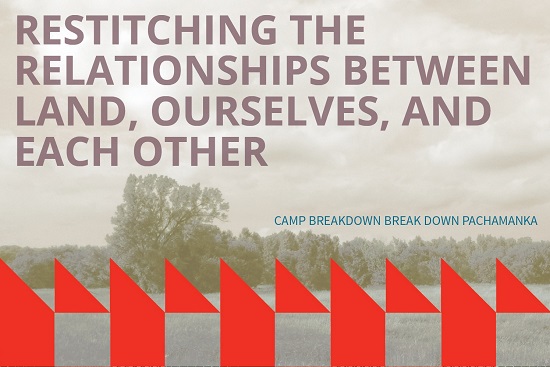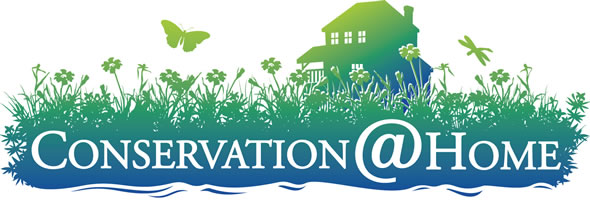May 14, 2017 – Bees, Conservation, Green Buildings and More
![]() Heather Holm, is a horticulturist and biologist by training who has just released a book called Bees: An Identification and Native Plant Forage Guide. It is a thoroughly researched, beautifully photographed and superbly organized work and if you care at all about this often misunderstood and vital insect, you should rush out and get a copy immediately.
Heather Holm, is a horticulturist and biologist by training who has just released a book called Bees: An Identification and Native Plant Forage Guide. It is a thoroughly researched, beautifully photographed and superbly organized work and if you care at all about this often misunderstood and vital insect, you should rush out and get a copy immediately.
No less than Douglas Tallamy, author of Bringing Nature Home (who has been on this program several times), says, “This is the book pollination biologists and homeowners alike have been waiting for!” And when he writes that, he raises a question that popped into my own tiny brain as I was going through the book: who did Holm have in mind as she was putting this book together?
I ask that because, as I mentioned earlier, the book is extremely comprehensive but extremely accessible to people like…well, me. And it occurred to me that I should ask Heather Holm who she thought would her audience would be. Will scientists want a copy of this, too?
But I digress.
Her website offers a preview of her guide to bees of north-central and eastern United States and southern Canada:
- In-depth profiles of 27 bee genera covering the life cycles, habitats, diet, foraging behaviors, crops pollinated, nesting lifestyles, seasonality, and preferred native forage plants
- 12 additional summary profiles for uncommon genera
- Approximately 100 native trees, shrubs, and perennials for the Midwest, Great Lakes, and Northeast regions
- Over 1500 stunning photographs, detailed descriptions, and accessible science
You will learn about the role of bees in our natural world, how diverse they are, what they consume, how they reproduce, where they live, how not all bees are social, how to tell them apart, which plants attract which bees, and much more.
If you think that most bees live in colonies, you might be surprised, for example, to learn that approximately 90% of bees are solitary. And, to bust the “bee hive in the tree” myth, 70% of bees nest below ground in shallow or extensive burrows. Go figure.
As I alluded to above, Holm also catalogues the native plants that our native bees need to thrive. She categorizes them by large trees, small trees and large shrubs, small shrubs, annual biennials and perennials.
This is one of those books that you will keep for many years. It’s truly a pleasure to have Heather Holm on the show this morning.
********************
The word “Pachamanka” means “earth pot”— using the earth to cook things, says Nance Klehm, an ecological systems designer, landscaper, horticultural consultant, and permacultural grower. And Pachamanka is also the name of the 50-acre farm she maintains in the Driftless Region of northwest Illinois, where she cultivates and forages medicinal and edible plants, keeps bees and a fruit orchard, raises chickens and quail, and grows for a seed bank. And she’s sharing her farm with those attending the upcoming Camp BreakDown Break Down Pachamanka, a retreat in Freeport, Illinois that’s designed to help people restitch the relationships between the land, ourselves, and each other.
Brett Bloom, is the organizer of Camp Breakdown, which runs from June 8-12. He talks with us this morning about the mission and goals of this experiential learning camp, which, in addition to offering a chance to reconnect to the land, is also aimed at helping people deal with the internal trauma caused by climate change and the resulting social breakdown:
 How do we undo the damages done to landscapes, other-than-human populations, and to ourselves, by the industrialized, petroleum-based society we are forced to rely on? How do we develop empathy and work with a hill, a stream, microbes, and other creatures in a landscape while also shifting our sense of self, and creating a different kind of culture? How do we imagine a future that is based on reciprocal, non-extractive relationships in everything we do?…
How do we undo the damages done to landscapes, other-than-human populations, and to ourselves, by the industrialized, petroleum-based society we are forced to rely on? How do we develop empathy and work with a hill, a stream, microbes, and other creatures in a landscape while also shifting our sense of self, and creating a different kind of culture? How do we imagine a future that is based on reciprocal, non-extractive relationships in everything we do?…
There will be land restoration work, walks with people who are working hard to shift how we understand our relationships to land and the nature that surrounds us. Presentations by inspiring people who can help us to understand and implement ancient land ethics. We will engage in directly embodied learning processes—adapted from Deep Listening—to build empathic capacities with other-than-human actors like animals, streams, plants, weather patterns, geological formations and time. We will discuss the psychological impacts of climate breakdown on us as individuals and our communities.
You can find an application form HERE.
********************
Question: When is a pyramid scheme good for the planet?
Answer: When the scheme is something called Conservation@Home.
Of course, when the folks at The Conservation Foundation talk about a “pyramid scheme,” their tongues are firmly in their cheeks. They started Conservation@Home in 2004 as a way to get homeowners to think about native plants, smart water use, finding ways other than chemicals to deal with pest problems, how to create habitat for wildlife, and other earth-friendly practices. They figured–and rightly so–that this is the kind of movement that engages more and more people, building from the bottom up, hence the reference to the pyramid scheme. And the best part is that, theoretically, it’s our environment that cashes in.
There are four “core service counties” in northeastern Illinois that serve as a base for The Conservation Foundation: Will, DuPage, Kane and Kendall, though they also do work in La Salle, Grundy and De Kalb Counties.
And now, TCF, along with a partnership between University of Illinois Extension and the Forest Preserves of Cook County, is bringing Conservation@Home to Cook County:
Landowners can earn a Conservation@Home certification and sign for their yard by filling out an application, meeting easy-to-follow criteria, and inviting a Conservation@Home evaluator to their yard for an evaluation.

Here’s how it works:
- Resident submits application online
- C@H Coordinator reviews application and consults with resident
- If it is determined that the resident is ready for a home visit, resident submits $50 fee
- Evaluator conducts phone interview and schedules home visit to last approximately one hour
- Yard is evaluated and if certifiable, C@H sign is awarded
- Resident begins receiving C@H perks
To fill out an application, click HERE.
Today on this program, Peggy Malecki and I welcome Jim Kleinwachter, who runs the Conservation@Home and the Conservation@Work programs for The Conservation Foundation, and Val Kehoe, Horticulture Program Coordinator at Illinois Extension in Cook County.
********************
Limelight is a type of stage lighting once used in theaters and music halls that was created when an oxyhdrogen flame was directed at a cylinder of quicklime (calcium oxide). “Limelight” is also a 1952 comedy-drama written, produced and directed by Charlie Chaplin—and one in which he talks.
But more important to our discussion this morning, Limelight is the annual gala and fundraising event for the United States Green Building Council – Illinois Chapter (USGBC-IL), and it’s coming up this Thursday, May 18, at the Museum of Broadcast Communications, in Chicago. USGBC-IL president Brian Imus joins Mike and Peggy in-studio to talk about the celebration celebrating achievements in sustainability. The event is open to the public, and will gather more than 500 industry leaders working in the sustainability field and the dynamic green building community in Illinois.
The USGBC-IL is the local affiliate of the national USGBC, a national non-profit building industry group that promotes buildings that are environmentally responsible, profitable and healthy places to live and work. They also developed the Leadership in Energy and Environment Design (LEED) standards that are used to promote energy efficiency and sustainability in design. We’ll talk with Brian about the USGBC-IL’s 2016-2020 Epic Challenge Strategic Plan, which was inspired by Paul Hawken’s work around Project Drawdown. And the USGBC-IL is seriously ambitious with the strategic plan, which has these goals:
- Engage 3,500 Chicago buildings in adopting one or more carbon drawdown strategies
- Ally with partners in every Chicago community to advance resiliency and livability at neighborhood-scales
- Train 30,000 to socialize and advance carbon drawdown strategies throughout Illinois.
Brian join us this morning to tell us more about how the strategic plan will be implemented.

